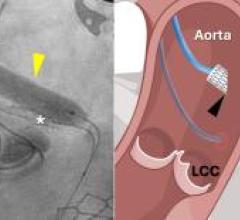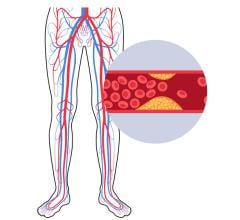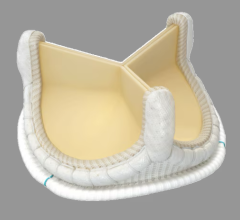November 23, 2010 – Study results found significant differences in men and women older than 80 who underwent carotid surgical incision and carotid artery angioplasty and stenting. The results were presented by Caron B. Rockman, M.D., associate professor of surgery at the New York University School of Medicine at the VEITHsymposium.
Comparisons were performed between older and younger patients and between those undergoing carotid artery angioplasty and stenting. Additionally, asymptomatic patients were compared to those experiencing moderate to severe symptoms. Analysis was performed among female patients to see whether outcomes differed based on the procedure used.
Almost 20 percent of the 54,658 patients were octogenarians. Octogenarians who underwent carotid procedures were more likely to be female, and were more likely to die in the hospital than younger patients. There were no overall differences in the prevalence of preoperative symptoms, the use of carotid artery stenting (CAS) as opposed to carotid endartarectomy (CEA), or the overall rate of periprocedural stroke between octogenarians and younger patients, with both at 1.1 percent. However, asymptomatic octogenarians were more likely to undergo CAS than were asymptomatic younger patients. In separate analysis of octogenarians alone, they had a two times higher rate of periprocedural stroke with CAS than with CEA.
Females and males were equally likely to be symptomatic, but females were significantly less likely to undergo CAS. Females and males had similar rates of preoperative stoke when undergoing CEA and CAS. However, symptomatic women had a significantly higher rate of peri-operative stroke overall than did symptomatic men. Among asymptomatic female patients alone, the peri-operative stroke rate was significantly lower for CEA than for CAS. Likewise, among symptomatic females, the peri-operative stroke rate favored CEA as opposed to CAS.
Nationally, octogenarians comprise nearly 20 percent of patients undergoing carotid revascularization procedures, despite concern regarding the benefits of these procedures in older patients. In spite of additional specific concerns regarding the complication rate of CAS in patients older than 80, asymptomatic octogenarians underwent CAS as opposed to CEA significantly more frequently than younger patients. However, their peri-procedural stroke rate overall was equally low when compared to younger patients. Furthermore, among octogenarians, the rate of peri-procedural stroke was significantly higher with CAS than with CEA, and this remained a significant finding when asymptomatic cases were separately examined. CEA may be the treatment of choice for properly selected octogenarians, unless compelling reasons exist to perform CAS.
National data reveals that fear of a high stroke rate after CEA among asymptomatic females is unfounded. The overall stroke rate among symptomatic females was higher than for symptomatic males, but still acceptable for carotid intervention in symptomatic patients. Nationally, females underwent CAS less frequently than males. Outcomes among females with regard to peri-operative stroke favored CEA over CAS, particularly in asymptomatic cases. Results appear to show that CEA may be the preferred treatment in females who warrant intervention, unless compelling reasons exist to perform CAS.
For more information www.VEITHpress.org


 January 15, 2026
January 15, 2026 









